The Future of Water Quality in Coeur d'Alene Lake (2022)
Chapter: Appendix A: Coeur d'Alene Watershed Analysis Methodology for Metals and Nutrients
Appendix A
Coeur d’Alene Watershed Analysis Methodology for Metals and Nutrients
This appendix details the committee’s methodological analysis of the history of concentration and fluxes from the Coeur d’Alene (CDA) Lake watershed described in Chapter 3. The committee’s analysis uses the statistical method known as Weighted Regressions on Time, Discharge, and Season (WRTDS; Hirsch et al., 2010) to make inferences about concentration and flux, on a daily time step, based on the types of records that are typically available in the rivers of the CDA Lake watershed (typically on the order of 250 observations for each of the key contaminants at a given monitoring location over nearly three decades). WRTDS has been used extensively for many river systems in the United States, including in this watershed (see Zinsser, 2020).
The WRTDS model uses statistical smoothing in order to partition the variations in concentration into components that are related to (1) season of the year, (2) watershed hydrologic condition (characterized by the daily mean discharge on the day of sample collection), (3) long-term trend, and (4) a random component (the unexplained portion of the variation). The analysis in Chapter 3 considered six U.S. Geological Survey (USGS) monitoring locations, shown in Figure A-1 and described in Table A-1.

TABLE A-1 Station Codes for USGS Data Used in WRTDS Analysis
| Gage Location | Station Code |
|---|---|
| NF CDA River at Enaville | 12413000 |
| SF CDA River at Elizabeth Park | 12413210 |
| SF CDA River near Pinehurst | 12413470 |
| CDA River near Cataldo | 12413500 |
| CDA River near Harrison | 12413860a |
| St. Joe River at Ramsdell near St. Maries | 12415135 (also 12415140) |
| Spokane River below Lake Outlet at Coeur d’Alene | 12417610 (for water quality) |
| Spokane River near Post Falls | 12419000 (for discharge) |
a Recent record uses acoustic velocity meter discharge measurements; earlier records are based on a model that relies on stage data at Cataldo and at the Lake outlet along with channel geometry data to produce a discharge record (see discussion of this and other adjustments in Zinsser, 2020).
NOTE: NF = North Folk; SF = South Fork.
TABLE A-2 Parameter Codes for All USGS Water Quality Data Used in WRTDS Calculations
| Parameter name | Parameter code |
|---|---|
| Total P | 00665 |
| Dissolved P | 00671 |
| Total N | 00060 |
| Dissolved NO2+NO3 | 00631 |
| Suspended Sediment | 80154 |
| Total Cd | 01027 |
| Dissolved Cd | 01025 |
| Total Pb | 01051 |
| Dissolved Pb | 01049 |
| Total Zn | 01092 |
| Dissolved Zn | 01090 |
NOTE: Cd = cadmium, N = nitrogen, NO2 = nitrite, NO3 = nitrate, P = phosphorus, Pb = lead, and Zn = zinc.
DESCRIPTION OF RIVER TREND CALCULATIONS
All of the river water quality trend results are developed using the USGS EGRET 3.0.7 open source software package. The R packages involved can all be downloaded for free from CRAN1 (The Comprehensive R Archive Network). The details of the methods discussed below are described in the USGS EGRET User Guide (Hirsch and De Cicco, 2015), including the method of downloading the data from the USGS Web Service. Additionally, the Kalman filter estimates of daily fluxes use a method described by Zhang and Hirsch (2019), and further information on the Kalman filter estimates is provided at the EGRET web page for WRTDSKalman.2 An illustrative example calculation is provided below for total phosphorus trends at the South Fork of the CDA River near Pinehurst (full list of parameter codes described in Table A-2).
The uncertainty calculations are done using the EGRETci package3 (EGRETci 2.0.4) described by Hirsch and De Cicco (2015). Examples of these calculations are provided below. The determination of the color of the cells in the Chapter 3 summary tables (e.g., Table 3-9) is based on the likelihood results described below. The example provided below is 200 replicates, which is typical of the analyses in the report; however, for less exact results, 50 replicates could be used.
Total Phosphorus Trends Calculation Example
An illustrative example is provided here to step through calculations of total phosphorus (parameter code 00665) trends at CDA River near Pinehurst (station 12413470) from October 1988 to September 2020. R scripts, commands, and printouts are provided below, with the corresponding results shown in Figures A-2 to A-8.
___________________
1 https://cran.rstudio.com/web/packages/index.html
Retrieve Data from USGS Web Service

Retrieve Daily Discharge Data (code “00060”)
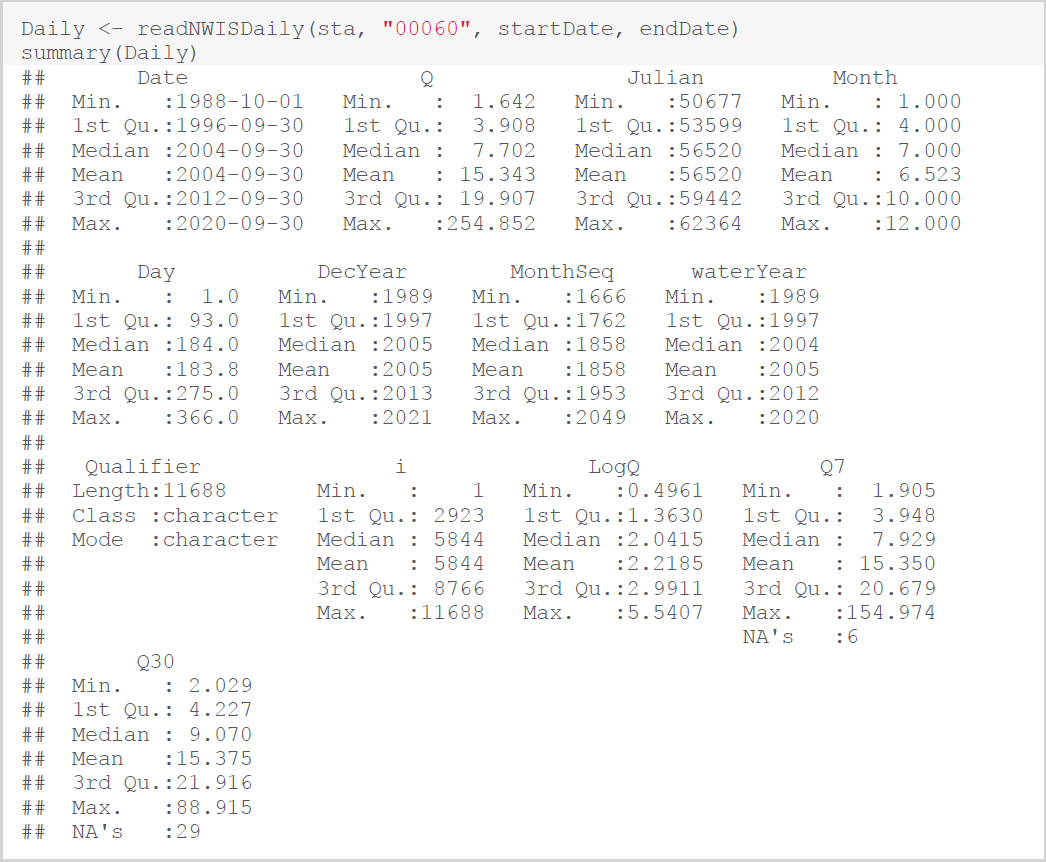
Retrieve the Metadata

Create the eList and Estimate the WRTDS Model
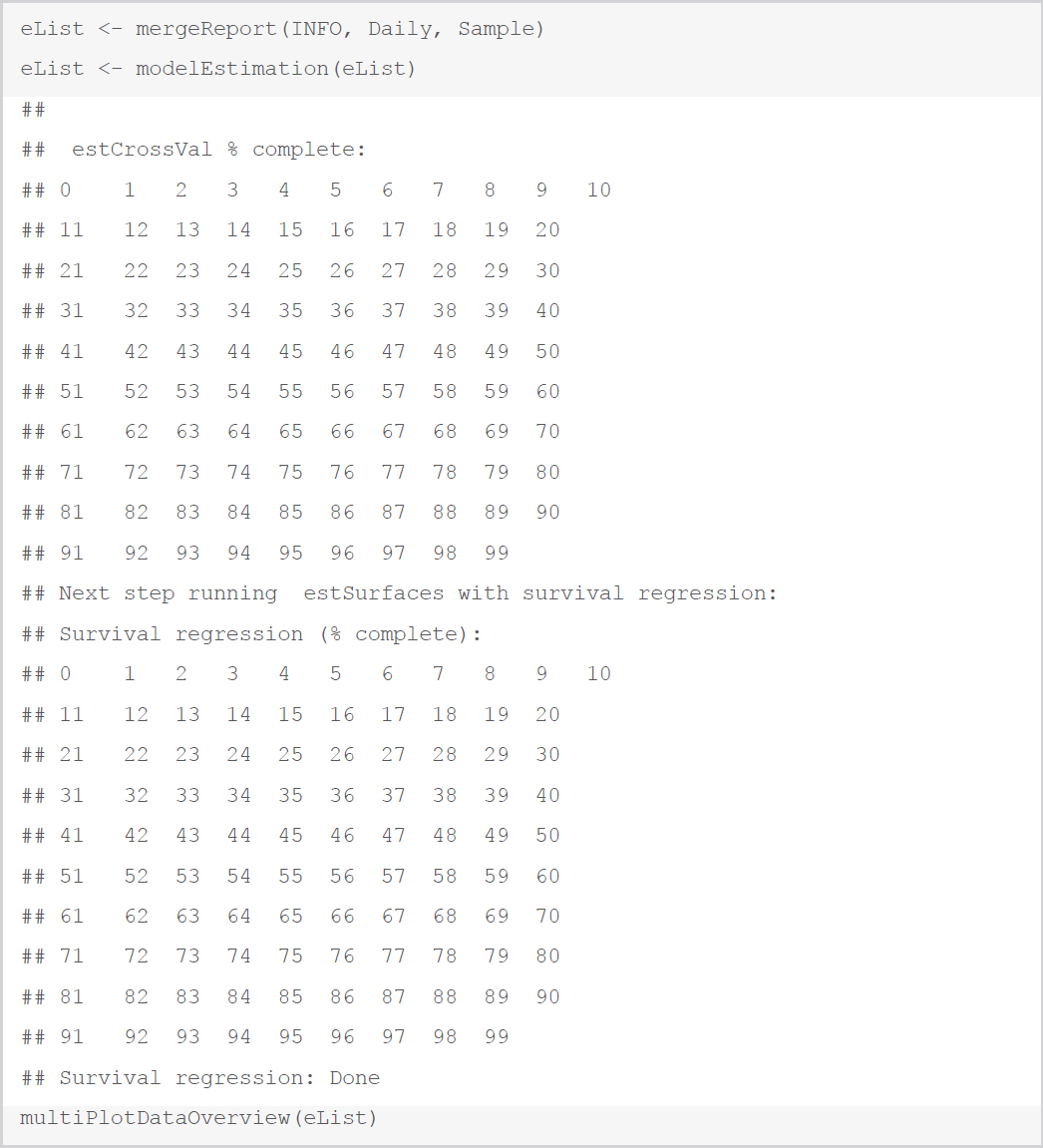
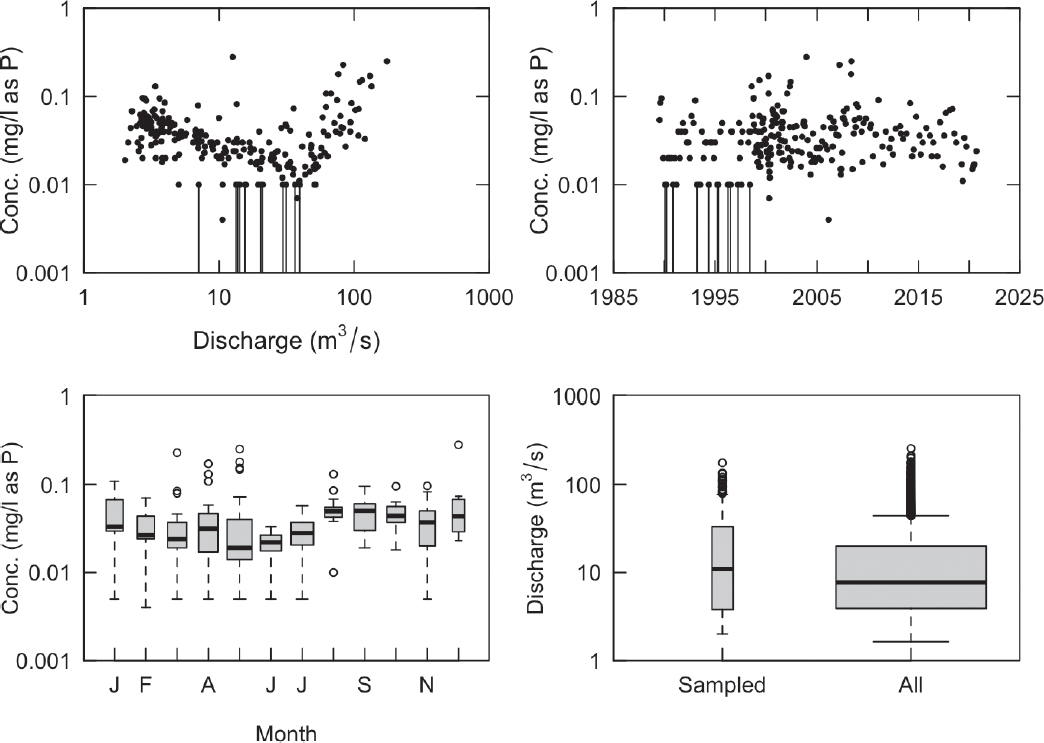
Calculate Error Statistics

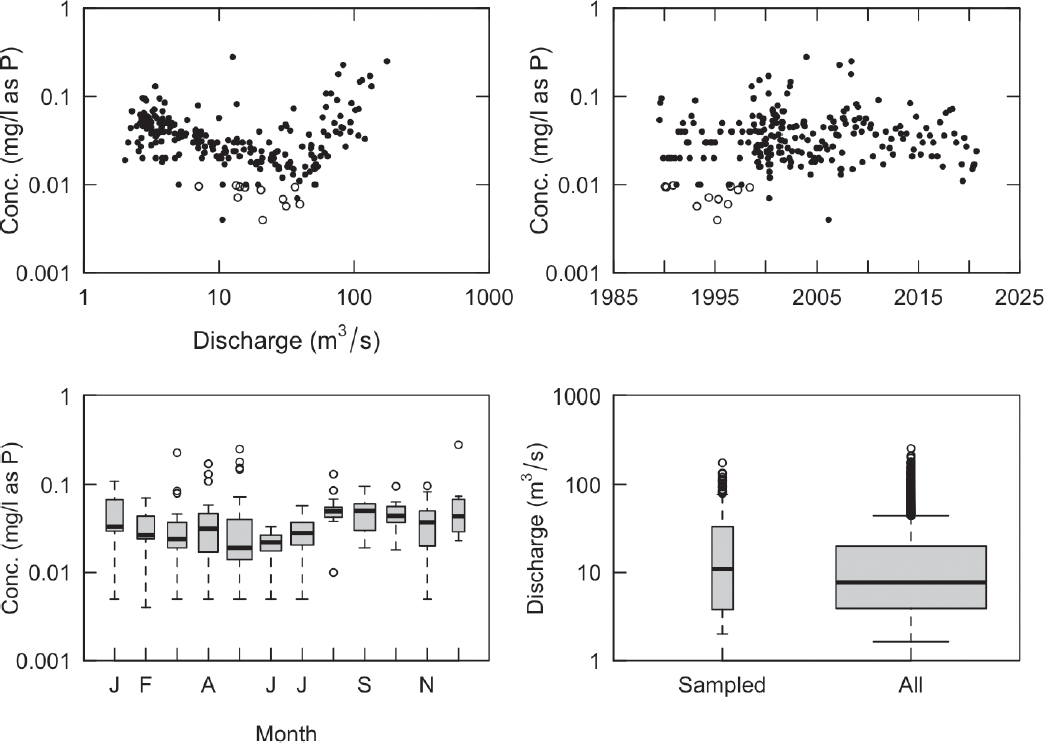
Additional Diagnostic Figures


Kalman Filter Estimates for Concentration and Flux for Each Day
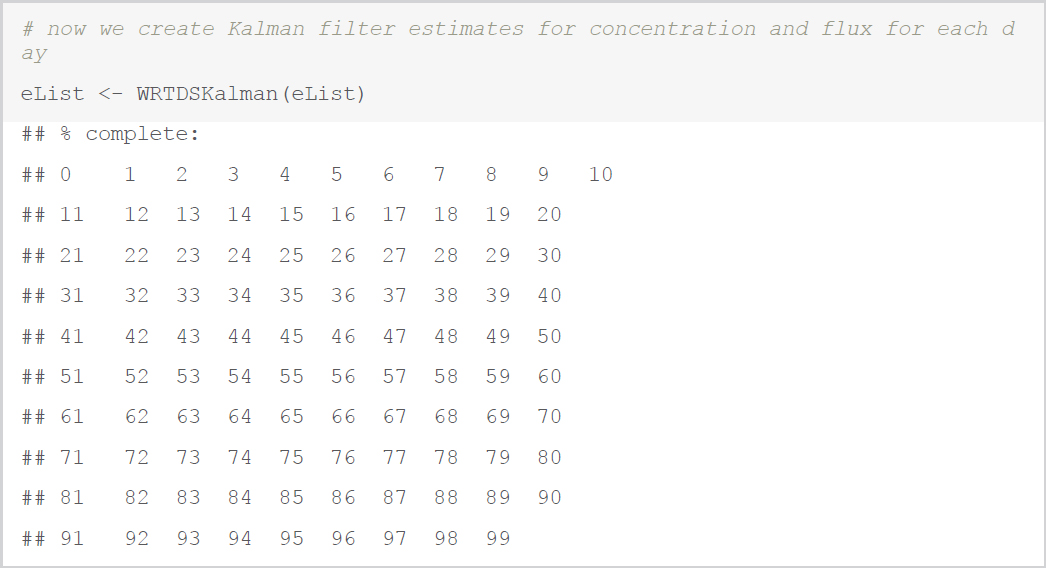
Plot Trend Results and Create Summary Table of Trends (such as Table 3-9)



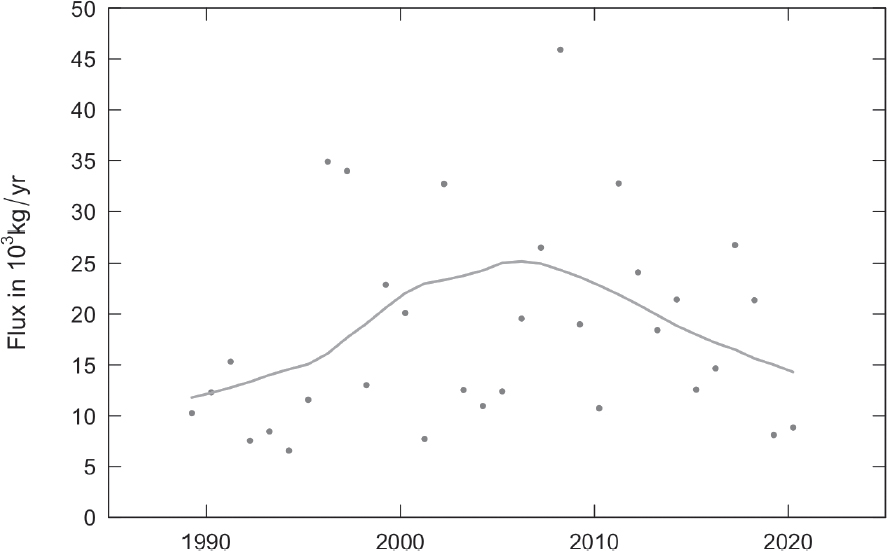
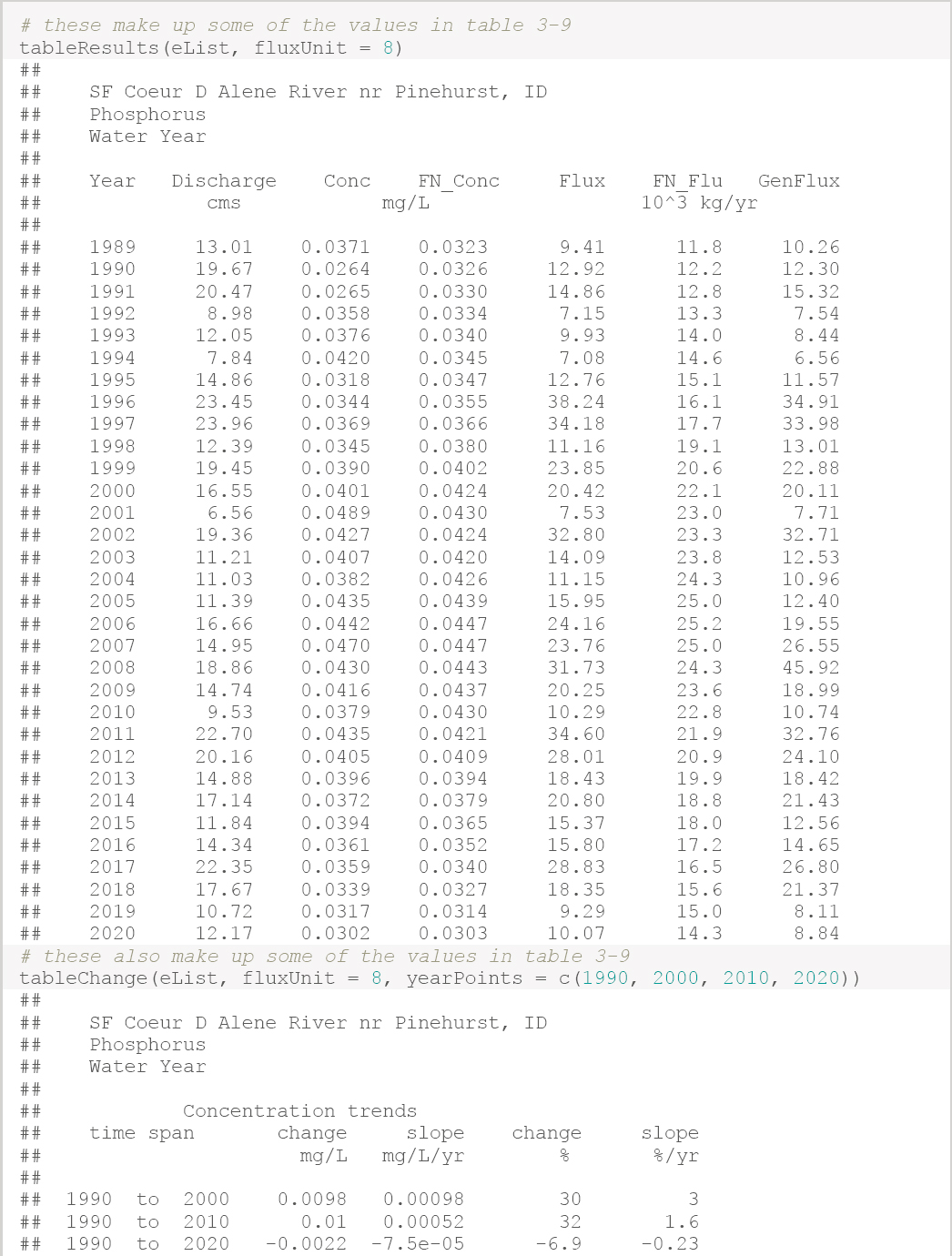
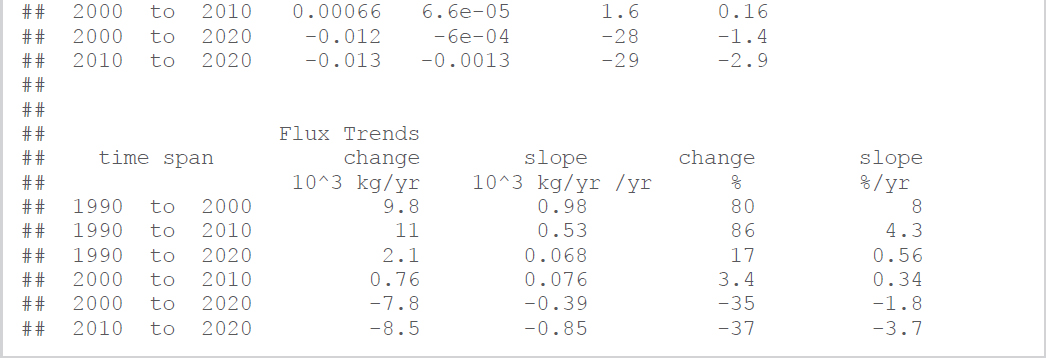
Total Phosphorus Trends Uncertainty Calculation Example
For the same example of total phosphorus trends at the South Fork of the CDA River near Pinehurst, calculations of uncertainty are detailed below.
Quantifying Uncertainty of the Trend Results

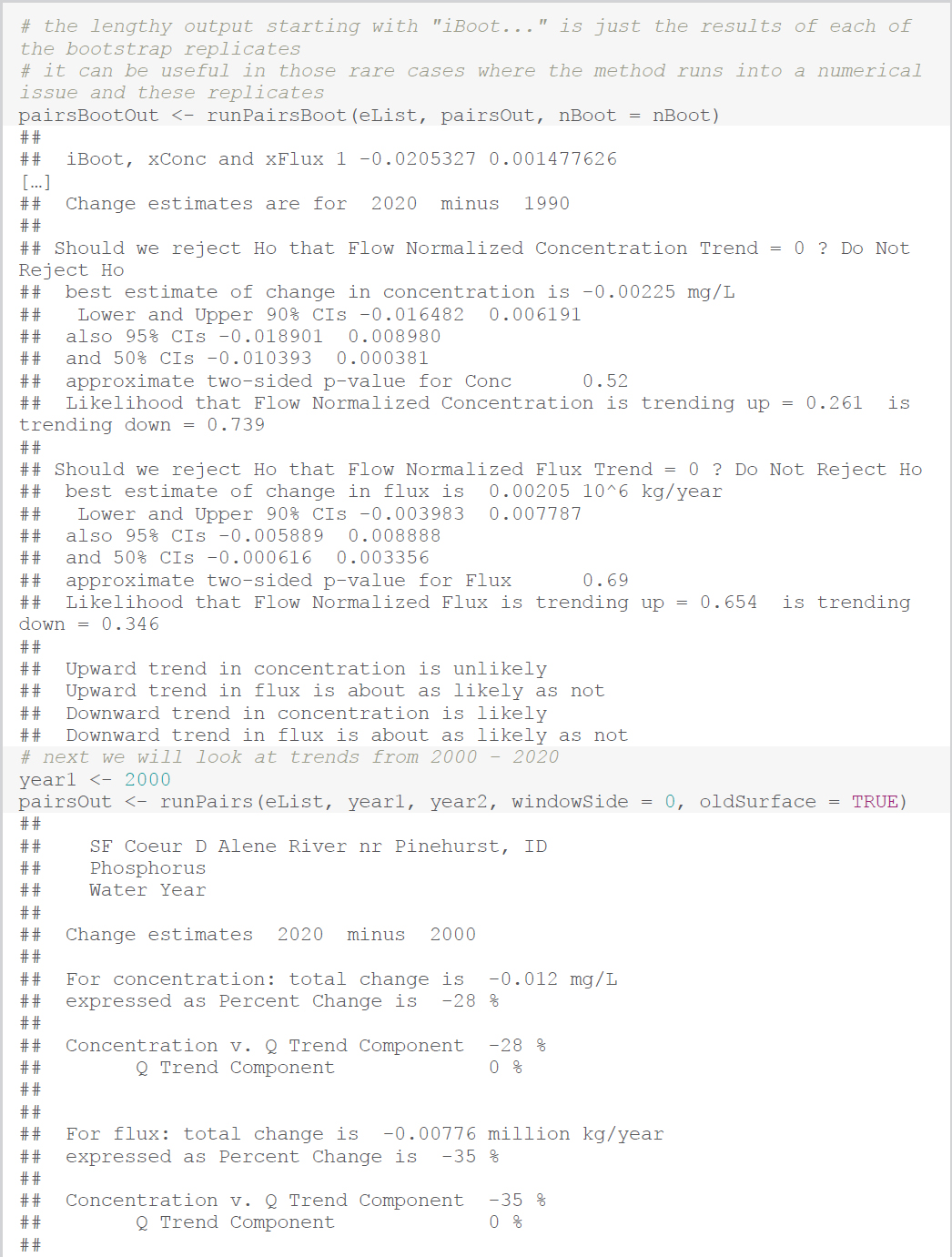





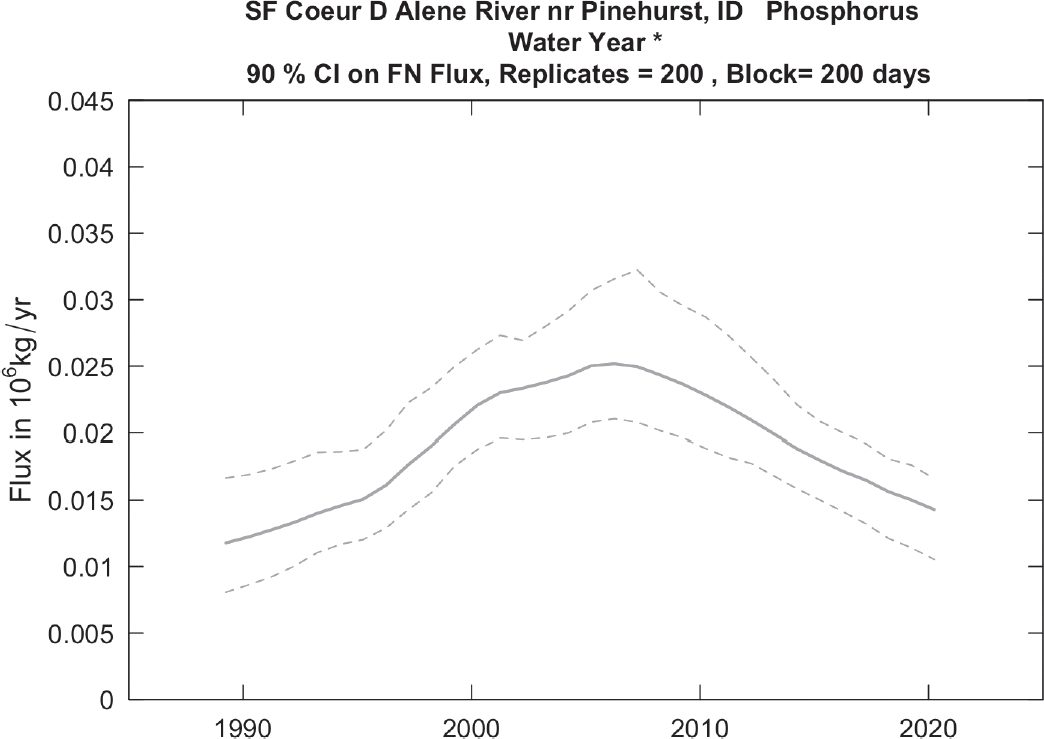
REFERENCES
Hirsch, R. M., D. L. Moyer, and S. A. Archfield. 2010. Weighted regressions on time, discharge, and season (WRTDS), with an application to Chesapeake Bay river inputs 1. Journal of the American Water Resources Association 46(5):857–880.
Hirsch, R. M., and L. A. De Cicco. 2015. User guide to Exploration and Graphics for RivEr Trends (EGRET) and dataRetrieval: R packages for hydrologic data (version 2.0, February 2015): USGS Techniques and Methods Book 4, Chapter A10, 93 p. https://dx.doi.org/10.3133/tm4A10.
Zhang, Q., and R. M. Hirsch. 2019. River water-quality concentration and flux estimation can be improved by accounting for serial correlation through an autoregressive model. Water Resources Research 55:9705–9723. https://doi.org/10.1029/2019WR025338.
Zinsser, L. M. 2020. Trends in Concentrations, Loads, and Sources of Trace Metals and Nutrients in the Spokane River Watershed, Northern Idaho, Water Years 1990-2018. USGS Scientific Investigations Report 2020-5096.
This page intentionally left blank.



















